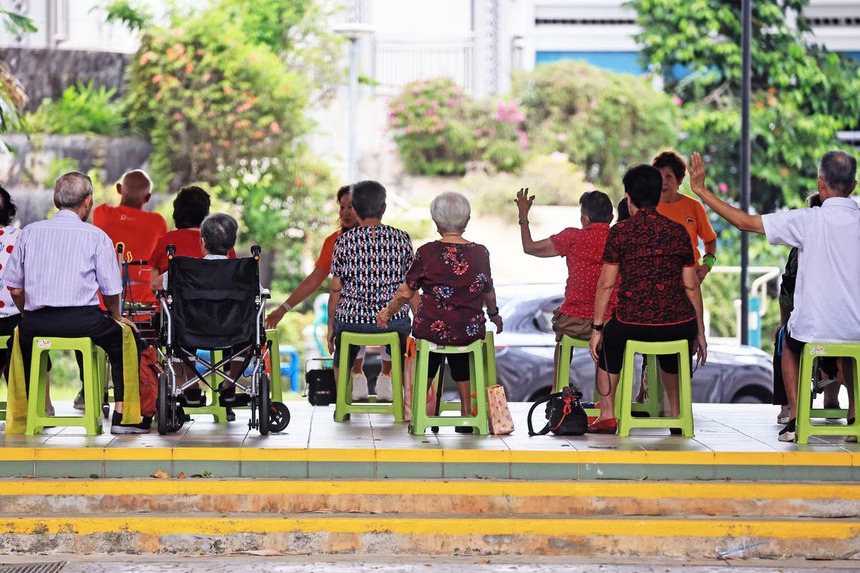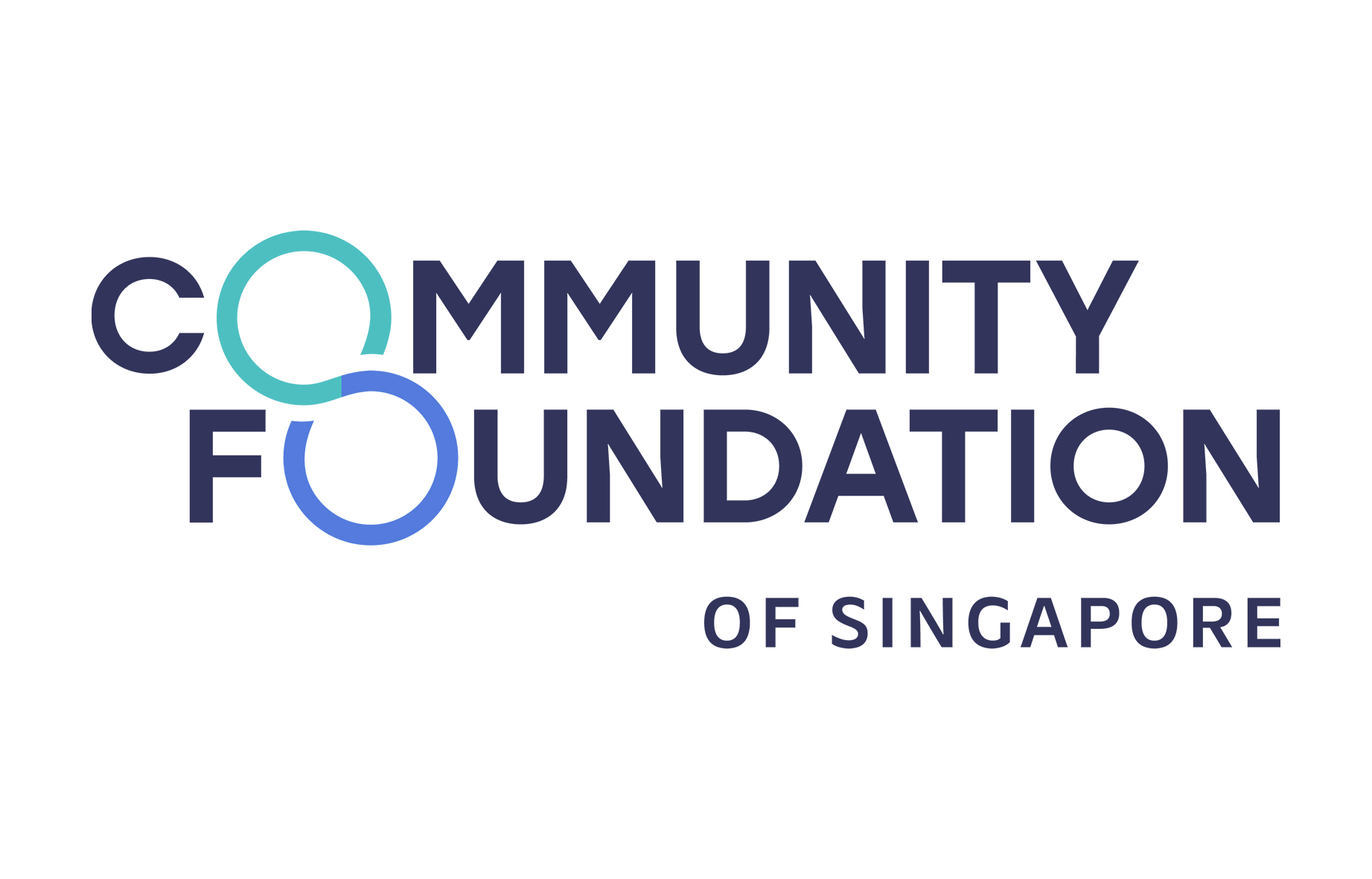What does philanthropy have to do with drone football?


This article was contributed by Paul Tan, CEO of the Community Foundation of Singapore, and published by The Straits Times.
A group of white-haired men and women, including one in a wheelchair, have clustered in a room and are focusing on plastic balls flying in the air. Inside each ball is actually a drone operated by a senior and the participants are trying to outmanoeuvre each other and get their drones into the circular goal. Although this is just a training session, there are broad smiles when someone scores and the occasional shout of “Goal!”
Drone soccer is just one of the many interesting projects funded by the Community Foundation of Singapore in a collaboration with the Agency for Integrated Care (AIC). The collaboration, whimsically named the “FUN! Fund”, identifies innovative programmes to engage our seniors. While the fund was started at the tail-end of the Covid-19 pandemic to promote active ageing, today it has broadened to include programmes that could unlock new ways to battle social isolation and boost physical well-being for the longer term.
One important demographic for this fund is the senior male. As reported in the media, our Active Ageing Centres have found it harder to draw male retirees to their activities, possibly due to cultural factors or the nature of the programmes. Hence there is a conscious attempt for the FUN! Fund to support projects such as carpentry and 3-D printing workshops that could draw in more men.
To help fund more of such innovative approaches, I contend that we need more generous Singaporeans to step up.
The power of partnerships
Some fair-minded readers may wonder: Why do you need philanthropy for this? Why can’t the Government fund all of this?
Well, the Government has said on numerous occasions that it wants to encourage civic participation, from individuals as well as corporates, and that it is willing to step back in some areas to allow for ground-up solutions to shape the community. Thus or those with deeper pockets, a clear philanthropic purpose, whether to bring joy or reduce pain, will surely be welcome as an asset to the larger society.
Indeed, without an innate spirit of generosity, people-to-people relationships take on a transactional lens. Worse yet, citizens may even evolve to see themselves as customers of services provided by a government, as opposed to citizens rooted to a place with a stake in society’s long-term well-being.
More practically, there is also the consideration that no government has infinite resources, and government agencies will have their own priorities. Many givers understand this. It should come as no surprise that some higher-cost projects, especially if they are seen as riskier or smaller in scale, may find it harder to secure public funding. Organising drone activities or 3-D printing workshops will be less “cost-efficient” for the Government than, say, a mass exercise activity in an HDB void deck.
Yet at the same time, we also instinctively know that deep engagement with targeted groups can leave an enduring impact, and change deep-seated mindsets. That’s where private monies can come in: Some donors with a higher threshold for risk may be more willing to support the areas that slip through the net of public funding.
Indeed, committed philanthropists often want to test and incubate an idea, with the hope that the commercial sector or the Government will adopt it after seeing the results of the pilot or incubated projects. The conventional wisdom: with scale, the unit cost of the innovation – and the societal good it will bring – will surely drop.
Nimble and agile approaches
In many instances, projects funded by philanthropy at the community level can move faster than if they were driven by local authorities, which may have other pressing priorities and resource constraints.
Take the recent forest wildfires in California which destroyed huge tracts of land, including thousands of homes, and displaced a vast number of residents. The non-profits played a key role in ensuring that those impacted by the devastating fires received immediate attention – the help ranged from sheltering displaced families and delivering medical aid to supporting first responders on the front line. These would surely have complemented the efforts by the federal and local authorities, overwhelmed by the scale of the disaster.
But there is an upstream dimension to this as well. Whatever one might make of the current state of politics in Washington, there is something to admire in how funders and non-profits in America find willing partners to innovate on possible solutions for wicked problems. In California, there are many privately funded research projects, variously tapping on wildfire-detection cameras, air sensors, and small satellites in low-earth orbits, to improve the ability to detect and monitor fires when they are still in the incipient phase. There is a certain derring-do and optimism that characterises
such initiatives. This is admirable.
Another example of philanthropy catalysing innovation closer to home involves a group of Asia-based funders, including the Singapore-based Quantedge Foundation, working with a farmers’ union in Vietnam to innovate the way smallholder farmers grow rice. By experimenting with new growing techniques, and using rice straw as compost, the bold vision is to reduce greenhouse gases and the use of chemical fertilisers in rice production.
Seeding innovation in Singapore
With Singapore squarely in the league of First World nations, the direction of philanthropic giving has evolved. We have moved away from reliance on wealthy businessmen in pre-independence Singapore to sponsor the building of schools and public infrastructure for the community.
Today’s needs are also more complex, and contemporary society faces different challenges, from within and without. For instance, our arts, heritage and sport charities still could do with more support from the public. At the same time, we also mustn’t forget that social mobility and financial struggles still remain a challenge for a segment of our populace.
But whether they are age-old needs or newer challenges – like migrant workers being exploited by their employers, the costly treatment of rare diseases or the surge in youth mental health issues – creative approaches will always be valued.
At the Community Foundation of Singapore (CFS), our non-profit organisation works with generous givers who start a fund and maintain a long-term relationship with us. But more than acting as just a steward of their donations, CFS can partner them in shaping a better society. The possibilities are diverse: Perhaps research into what type of mangrove plants best reduce coastal erosion in a South-east Asian context? Or new ways to help low-functioning autistic young adults navigate life in Singapore? Or how about an art studio for former offenders who picked up visual arts skills while in jail? Of course, we need to find non-profits that can identify the needs and flesh out the ideas, but financial resources will always be critical.
As committed philanthropists grow in their giving journey, we can help them seed innovative ways to uplift lives, make the world a better place for the next generation and, yes, spark even the same sense of gleeful fun that we witnessed in the seniors who pitted their skills against each other in drone soccer.
Source: The Straits Times © SPH Media Limited. Permission required for reproduction.
This article was contributed by Paul Tan, CEO of the Community Foundation of Singapore, and published by The Straits Times.
A group of white-haired men and women, including one in a wheelchair, have clustered in a room and are focusing on plastic balls flying in the air. Inside each ball is actually a drone operated by a senior and the participants are trying to outmanoeuvre each other and get their drones into the circular goal. Although this is just a training session, there are broad smiles when someone scores and the occasional shout of “Goal!”
Drone soccer is just one of the many interesting projects funded by the Community Foundation of Singapore in a collaboration with the Agency for Integrated Care (AIC). The collaboration, whimsically named the “FUN! Fund”, identifies innovative programmes to engage our seniors. While the fund was started at the tail-end of the Covid-19 pandemic to promote active ageing, today it has broadened to include programmes that could unlock new ways to battle social isolation and boost physical well-being for the longer term.
One important demographic for this fund is the senior male. As reported in the media, our Active Ageing Centres have found it harder to draw male retirees to their activities, possibly due to cultural factors or the nature of the programmes. Hence there is a conscious attempt for the FUN! Fund to support projects such as carpentry and 3-D printing workshops that could draw in more men.
To help fund more of such innovative approaches, I contend that we need more generous Singaporeans to step up.
The power of partnerships
Some fair-minded readers may wonder: Why do you need philanthropy for this? Why can’t the Government fund all of this?
Well, the Government has said on numerous occasions that it wants to encourage civic participation, from individuals as well as corporates, and that it is willing to step back in some areas to allow for ground-up solutions to shape the community. Thus or those with deeper pockets, a clear philanthropic purpose, whether to bring joy or reduce pain, will surely be welcome as an asset to the larger society.
Indeed, without an innate spirit of generosity, people-to-people relationships take on a transactional lens. Worse yet, citizens may even evolve to see themselves as customers of services provided by a government, as opposed to citizens rooted to a place with a stake in society’s long-term well-being.
More practically, there is also the consideration that no government has infinite resources, and government agencies will have their own priorities. Many givers understand this. It should come as no surprise that some higher-cost projects, especially if they are seen as riskier or smaller in scale, may find it harder to secure public funding. Organising drone activities or 3-D printing workshops will be less “cost-efficient” for the Government than, say, a mass exercise activity in an HDB void deck.
Yet at the same time, we also instinctively know that deep engagement with targeted groups can leave an enduring impact, and change deep-seated mindsets. That’s where private monies can come in: Some donors with a higher threshold for risk may be more willing to support the areas that slip through the net of public funding.
Indeed, committed philanthropists often want to test and incubate an idea, with the hope that the commercial sector or the Government will adopt it after seeing the results of the pilot or incubated projects. The conventional wisdom: with scale, the unit cost of the innovation – and the societal good it will bring – will surely drop.
Nimble and agile approaches
In many instances, projects funded by philanthropy at the community level can move faster than if they were driven by local authorities, which may have other pressing priorities and resource constraints.
Take the recent forest wildfires in California which destroyed huge tracts of land, including thousands of homes, and displaced a vast number of residents. The non-profits played a key role in ensuring that those impacted by the devastating fires received immediate attention – the help ranged from sheltering displaced families and delivering medical aid to supporting first responders on the front line. These would surely have complemented the efforts by the federal and local authorities, overwhelmed by the scale of the disaster.
But there is an upstream dimension to this as well. Whatever one might make of the current state of politics in Washington, there is something to admire in how funders and non-profits in America find willing partners to innovate on possible solutions for wicked problems. In California, there are many privately funded research projects, variously tapping on wildfire-detection cameras, air sensors, and small satellites in low-earth orbits, to improve the ability to detect and monitor fires when they are still in the incipient phase. There is a certain derring-do and optimism that characterises
such initiatives. This is admirable.
Another example of philanthropy catalysing innovation closer to home involves a group of Asia-based funders, including the Singapore-based Quantedge Foundation, working with a farmers’ union in Vietnam to innovate the way smallholder farmers grow rice. By experimenting with new growing techniques, and using rice straw as compost, the bold vision is to reduce greenhouse gases and the use of chemical fertilisers in rice production.
Seeding innovation in Singapore
With Singapore squarely in the league of First World nations, the direction of philanthropic giving has evolved. We have moved away from reliance on wealthy businessmen in pre-independence Singapore to sponsor the building of schools and public infrastructure for the community.
Today’s needs are also more complex, and contemporary society faces different challenges, from within and without. For instance, our arts, heritage and sport charities still could do with more support from the public. At the same time, we also mustn’t forget that social mobility and financial struggles still remain a challenge for a segment of our populace.
But whether they are age-old needs or newer challenges – like migrant workers being exploited by their employers, the costly treatment of rare diseases or the surge in youth mental health issues – creative approaches will always be valued.
At the Community Foundation of Singapore (CFS), our non-profit organisation works with generous givers who start a fund and maintain a long-term relationship with us. But more than acting as just a steward of their donations, CFS can partner them in shaping a better society. The possibilities are diverse: Perhaps research into what type of mangrove plants best reduce coastal erosion in a South-east Asian context? Or new ways to help low-functioning autistic young adults navigate life in Singapore? Or how about an art studio for former offenders who picked up visual arts skills while in jail? Of course, we need to find non-profits that can identify the needs and flesh out the ideas, but financial resources will always be critical.
As committed philanthropists grow in their giving journey, we can help them seed innovative ways to uplift lives, make the world a better place for the next generation and, yes, spark even the same sense of gleeful fun that we witnessed in the seniors who pitted their skills against each other in drone soccer.
Source: The Straits Times © SPH Media Limited. Permission required for reproduction.
- Related Topics For You: AGEING WELL, COMMUNITY IMPACT FUND, DONOR STORIES, DONOR-ADVISED FUND, FUN! FUND, NEWS, OPINION, PARTNERSHIP STORIES, SENIORS


